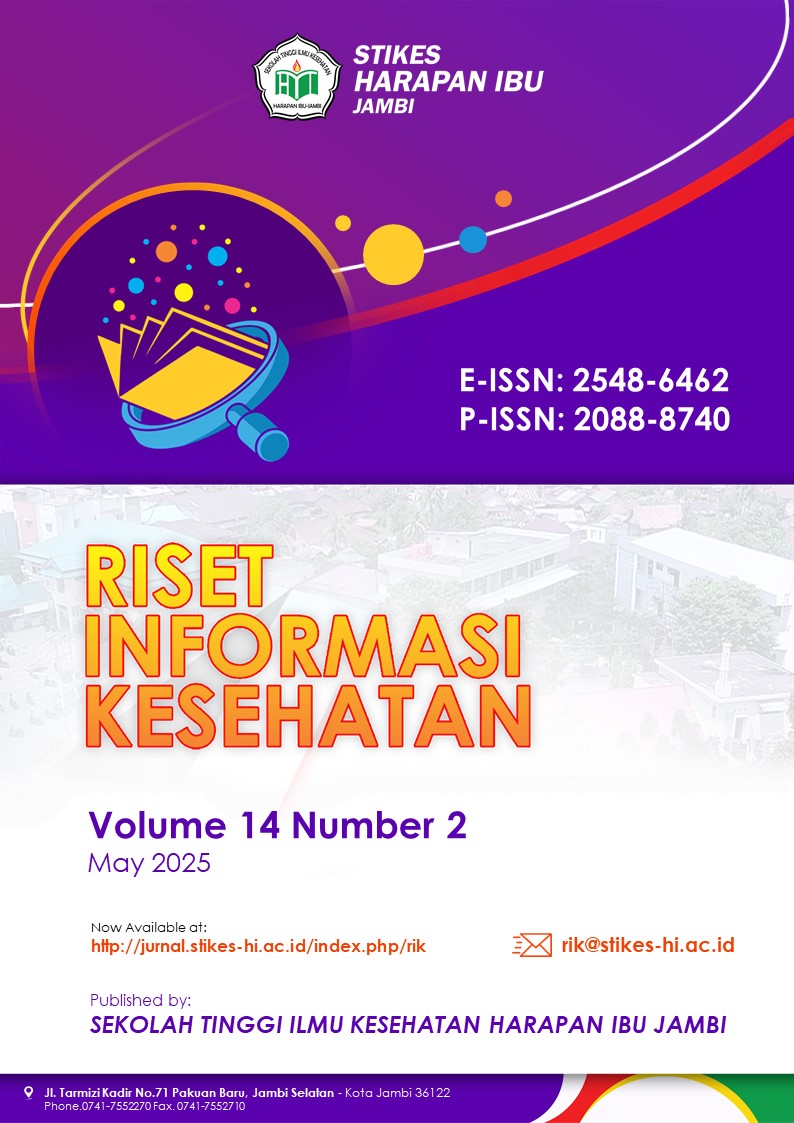Abstract
Background : Mental health among adolescents is significantly affected by various risk factors, particularly anxiety, which can hinder academic performance and overall well-being. This research aims to identify the anxiety risk factors among students at STIKES Al-Su'aibah, highlighting the prevalence and impact of these factors on their mental health.
Method: A quantitative descriptive study was conducted using closed questionnaires to collect structured data from students. This approach allows for the measurement and comparison of responses, enabling the identification of specific patterns and characteristics related to anxiety risk.
Results: Out of 138 participants, 53.3% reported no anxiety, while 43.3% experienced mild to moderate anxiety, with 3.3% facing severe anxiety. Factors influencing anxiety include academic pressure, limited social support, and lifestyle choices such as dietary habits and physical activity levels. Notably, the study found a significant relationship between smoking and anxiety levels (p = 0,02).
Conclusion : The findings indicate a notable prevalence of anxiety among students, underscoring the need for enhanced mental health screening and support programs at educational institutions. Strategies such as counseling, stress management training, and community-building activities are recommended to promote the psychological well-being of students.

This work is licensed under a Creative Commons Attribution 4.0 International License.
Copyright (c) 2025 Riset Informasi Kesehatan

